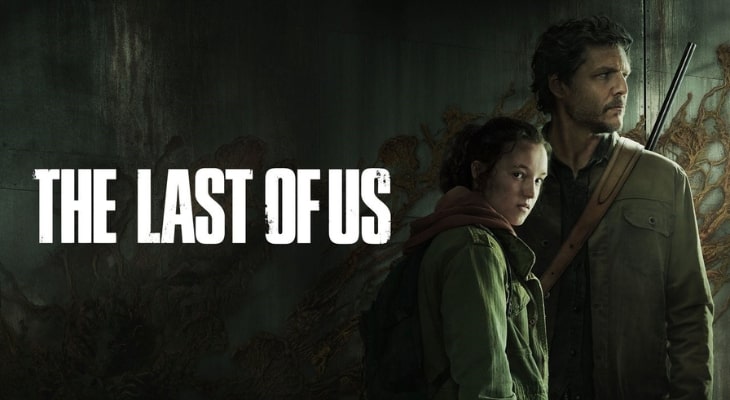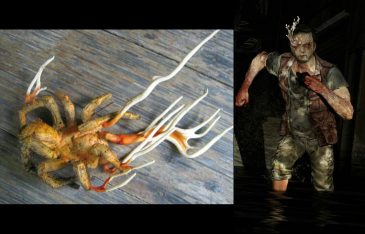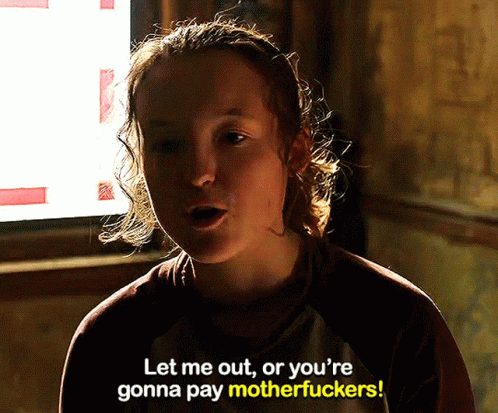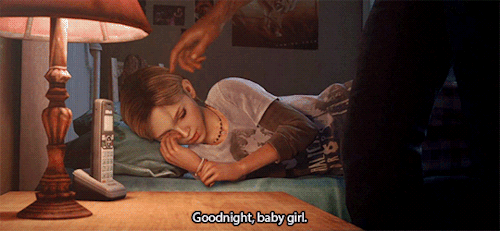When You’re Lost in the Darkness: The Last of Us, Episode One

Hello! It’s me. Your wildly introverted author/gamer, who is very excited to be sharing my thoughts with you regarding HBO’s recent adaptation of The Last of Us from the perspective of someone who absolutely loved the game on which it is based. I’ll be examining each episode independently.
Unfortunately, due to my working an obscene amount, I have limited time, so I’ll only be able to post every second week or so. For that reason, though they’re written shortly after each episode airing, each review will be far behind the episodes as they’re released. That’s alright, though, as I reckon it will leave plenty of time for you to watch each episode and I won’t have to worry about spoiling it for you, because there absolutely will be spoilers.
So, with that out of the way, let’s just dive right into episode one: When You’re Lost in the Darkness.
First of all, the title is great. It is something the Fireflies (freedom fighters/terrorist group, depending on your point of view) say in the game. “When you’re lost in the darkness, look for the light.” In fact, you hear it in the opening credits of the game… If I remember rightly. It has been many years since I’ve played it. As I recall, the opening credits of the game do a fantastic job explaining how things came to be as they are immediately following the pandemic onset using audio only. Obviously, the television show will have to be different.
Immediately, we open on a chat show in the 60s, complete with smoking on air, in which the threat of a fungal pandemic is explained. It’s brilliantly done. This doesn’t happen in-game, and it serves as a brilliant introduction to what it is the world is going to experience in the not too distant future; a mutation of the cordyceps fungus caused by global warming.
“So if that happens…?”
“We lose.”
Such a simple verbal exchange, and quite chilling all the same.

The music for the opening credits made me smile. Folks who played the game will be very familiar with it. I was smiling from the first strains of that guitar. Not only do I appreciate that they used the same (or exceptionally similar) music, but it made me feel like this story was safe in their hands.
We get much more with Joel and his daughter, Sarah, in this episode than we do in the game. This is a lovely touch and will help fill the attachment gap that is a necessary side effect of the medium. In the game, not only do you get to play a short while as Sarah, but you spend a great deal of time trying to protect her yourself as Joel. For these reasons, it’s extremely easy to form an attachment to her. Television doesn’t have the benefit of that in-game intimacy, so some extra time with those two (and a better introduction to Tommy to boot) is very welcome. I must say, Nico Parker (who plays Sarah) knocked it out of the park. As someone who adores the game, I really do appreciate the subtle similarities that we see when we first meet Joel and Sarah. Sarah is wearing the same shirt as she is in the video game. Joel’s bedroom, too, is familiar. It’s a little smaller, a little less tidy, but all the elements are there; most particularly exercise equipment. You can also see a guitar in the living room, giving a subtle hint to what we learn about Joel later in game.
But there are some interesting differences. Mostly, I appreciated the zoom to the combat veteran sticker on the truck. As far as I can remember in the game, there was no indication of Joel or Tommy’s service. The truck is Tommy’s, I think, so I’m guessing he is the veteran of the brothers. It’s an assumption I’ve made largely because I got the impression that Joel had a promising sports career that was lost due to an injury. I do like that little sticker, though. It gives the viewer a reason to believe Tommy and therefore Joel have more than just instinct on their side, enabling them to survive the absolute chaos about to happen. We also don’t get any interaction with the neighbours in game, or Sarah after school.
I also appreciate these differences. The HBO version does a fantastic job building tension, a subtle increase of oddness to the day that’s hard to ignore. Some of it is, no doubt, the viewer’s anticipation of what they know to be coming, but the vibe of not-quite-right is excellently done in these scenes. Some of it is a little less subtle (such as grandma twitching in the background), but still, I really liked that peek into the afternoon before the world ended.
It’s much later, when Joel comes home late from work on his birthday, that we meet Joel and Sarah in game. It played out on screen in near perfect parallel to the game – dialogue and everything. The only change is the television show giving Joel a reason to leave the house after he puts the sleeping Sarah in her bed – to bail his brother out of jail. It provides a great reason to have Joel out of the house when Sarah wakes up in the middle of the night. There’s also the missing ‘Baby girl’ from Joel when he puts Sarah to bed, but we get that later, so I’m not mad about it. The phrase is weightier than it may seem at first blush (assuming the show continues to mirror the game as well as it did in this episode).
Similarly, Sarah visiting her neighbour when everything goes down is unique to the television show. Instead, in-game, an infected runner breaks into the house moments after Joel returns home. Joel does come to the rescue both times, though. In the game, he shoots the runner. In the show, he brains an old lady with a wrench. Nice. In all seriousness, though, I do like that change if only because it provides some clue to Joel’s ability for violence which is lost in later scenes in the episode.
So much of this episode was pulled directly from the game; the police cars roaring past at the crossroads, the burning farm house, leaving the family on the side of the road – all of it straight from the game. I do appreciate the fake-out with the other truck when Tommy is forced to drive into town. In the game that truck is what takes Tommy’s truck out. In the show, it’s a near miss, and it’s a part of a plane that crashes in the town. Joel’s flight after his and Sarah’s separation from Tommy is also straight out of the game, though I feel like Joel died several times in the attempt when I was playing. Ahem… I’m not an especially skilled gamer. Also, kudos to that actor playing the infected fellow chasing Joel and Sarah. He literally threw himself into the role (heh heh heh).
Sarah’s death plays out the same way. I knew it was coming (in game I sobbed relentlessly), and I still teared up. Joel uses the “Baby girl” here in both the show and the game, and it still hits so hard. It is after this that the game runs its opening credits, giving the gamer space to breathe before the next horrendous moment.

Twenty years later, we find Joel with woman called Tess in the Boston QZ (Quarantine Zone), and this is where I find it deviates most from the game; not in terms of extra scenes, but definitely in terms of setting up the characters.
For starters, Tess is really the power of the underground, and it’s her that everyone respects and defers to in the game. The television series makes it seem like Joel is the one they fear (at least Robert does). But when we play this part in game, Joel is a step behind Tess. When he’s not, he’s stopped by someone who immediately backs down when Tess appears, making it clear Joel is with her. I wish we got more of that. Tess saying “He answers to me” about Joel is not sufficient, I feel, to prove this dynamic. Joel was very much content to follow Tess’ lead in game. While it feels much more collaborative in the television show, I feel it strips Tess of a little of her badassedness… and just plain badness.
Similarly, in the game Joel and Tess were buying guns from Robert, not a car battery. Joel had no intention of going to find his brother Tommy. The two were estranged, and it’s not explained why until much later in the game (which is: what Joel led him to do in the years since Sarah died to survive left Tommy entirely too traumatized to continue with his brother). To that effect, while I appreciate the expediency with the show’s manner of dealing with Robert, facilitating the meeting of Joel and Marlene, I’m missing the crucial character clues that we got in game when it was Joel and Tess who dealt with him. Joel should have broken Robert’s arms in the “interrogation,” just as he did in game. It proves his comfort with violence as a means to get what he wants, which becomes important later in the story. Later in the show, Tess notes that she and Joel aren’t good people. Again, though, I feel it’s not enough to simply say it. In this way, for the characters of Tess and Joel, the game was superior. It really showed that Joel was capable of extraordinary, and quite senseless violence in order to achieve his ends, which set up quite nicely a scene that happens later in game. We may or may not get that in a future episode, though, so perhaps it’s unnecessary to make Joel as initially unlikeable in the show.
Of the changes made for the show, however, the introduction to Ellie is phenomenal, and beats the in-game version. It doesn’t happen in game this way, but the minute I heard Bella Ramsay’s end to her count to ten test, I immediately felt that they had gotten Ellie so incredibly right. She’s clever, she’s foul-mouthed (I relate on a personal level), and she’s tough. She can also be brash and unthinking, as she was when she tried to stab Joel on their first meeting. This didn’t happen in game, and the game is poorer for it. It was a fantastic introduction to Ellie, a fabulous way to set up initial conflict between her and Joel, and I’m so very glad they included it. It made me smile.

I also like that they mentioned Riley this episode. She was extremely important to Ellie, and provides an excellent motivating factor and reason for Ellie’s feelings later in the game (and in The Last of Us, Part Two (also a game)) We meet her in the DLC of the first game. I do hope more of that story is explored.
Tommy and Joel keeping in contact via radio is weird to me, for the reasons previously stated, and it has me curious as to what the narrative payoff will be for this inclusion. It explains why Joel was looking for a truck battery from Robert, I suppose (his brother stopped responding so Joel is out to find him), and therefore gave him and Tess a reason to seek out Robert and thus meet Marlene who leads the Fireflies in the Boston QZ. Guns would’ve worked too, given that the Fireflies also need guns to wage their war against the fascistic government running things there, as in the game. Perhaps they wanted to highlight Joel’s commitment to family to the exclusion of all else? That can be demonstrated better and later, though.
Joel’s violence is explored a little at the end of the episode, but we see it through Joel’s PTSD. I appreciate that they included that, as PTSD wasn’t explored as obviously in game, but I do feel Joel’s violence is a lot more terrifying when he’s in complete control of himself while it is happening. It’s something about his character in game that I really appreciated; he is a good man to those he cares for. To everyone else, he is straight from Hell. I wish they kept more of that in the show. Perhaps they feared making him too unlikeable for a general audience.
All the same, the first episode was such a brilliant introduction to The Last of Us, and gave enough of the game to satisfy someone like myself, who loved it so very much, that I am very excited about the show’s direction. This looks like an adaptation done right. This is all too rare for video game adaptations. With luck, that feeling will hold, even when they deviate wildly from the game. I cannot wait for episode two!
Articles in this series:
When You’re Lost in the Darkness: The Last of Us, Episode One
Infected: The Last of Us, Episode Two
Long, Long Time: The Last of Us, Episode Three
Please Hold My Hand: The Last of Us, Episode Four
When S.M. Carrière isn’t brutally killing your favourite characters, she spends her time teaching martial arts, live streaming video games, occasionally teaching at the University of Ottawa, and cuddling her cat. In other words, she spends her time teaching others to kill, streaming her digital kills, teaching about historical death, and cuddling a furry murderer. Her latest novels are Skylark, Daughters of Britain, and Human.

I’ve never played the games as I don’t make time for video games in general, but I had heard very good things about this series and I was at least aware of the big story beats. I have really enjoyed the series thus far and your article only increased that by providing more depth on the differences between mediums and adding perspective to narative choices. Thank you. I look forward to your insights for future episodes.
The games are so very good. Naughty Dog had a story to tell, and they did it very well. I can’t wait to see what they do with it now it’s being transferred to the small screen.